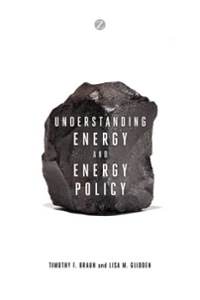Question
Our lecture on cost leadership identified multiple sources of cost advantages. Mainly, we spoke about the following assources of cost advantages: 1. Size differences and
Our lecture on cost leadership identified multiple sources of cost advantages. Mainly, we spoke about the following assources of cost advantages:
1. Size differences and economies of scale
2. Size differences and diseconomies of scale
3. Experience differences and learning-curve economies
4. Differential low-cost access to productive inputs
5. Technological advantages independent of scale
Also, within each source, we specifically focused on howthis source delivered cost advantages (or disadvantages) to the firm.As you read this article, answer the following questions:
1) What are the source/sources of cost advantages (or disadvantages) for McDonald's?
2) How McDonalds' actions described in the publication can potentially contribute positively/negatively to McDonald's cost leadership strategy?
McDonald's Is Pushing Out the Small Fries
Costly upgrades require larger franchisees with deeper pockets.
by Leslie Patton, September 1, 2016
After more than three decades of operating McDonald's restaurants, Ted Lezotte in 2015 sold the last of his six stores in Michigan. Lezotte says looming costly remodelingone rebuild was estimated at $1.9 millionhelped spur his decision. "In today's financial world, it's becoming necessary to have more than a couple [of stores] to survive," he says. The chain is looking for franchisees who have 8 to 10 locations, he says: "Ten kind of gives you a good footing" in case one isn't doing so well. Of his six stores, one was closed, the rest sold to larger McDonald's operators.
McDonald's has long been famous for its small-owner-focused franchise system, in which entrepreneurs with only a store or two would sweat the details of their restaurants, yielding better customer service. Lately, however, the fast-food giant has begun shedding mom and pop owners in favor of bigger operators. Since 2014 the number of U.S. McDonald's franchise owners has dropped 2.6 percent, while the number of franchised locations has grown 1.2 percent, according to data compiled by researcher FranchiseGrade.com. The chain's biggest franchisees are getting larger, while those who own five locations or fewer are on the wane.
Getting rid of smaller franchisees allows McDonald's to speed renovations and the implementation of new technology, such as the self-ordering touchscreens being tested in about 250 locations. Such gear can be expensive, and smaller franchisees often don't have the capital to pay upmaking them less willing to embrace the company's plans.
They're encouraging the smaller franchisees to sell out," says Rob Hunziker, owner of Advanced Restaurant Sales, a restaurant brokerage. "When you have thousands of franchisees that you need to keep monitored or updated, it's just difficult and expensive for the parent company." He says the chain has increasingly pushed the shift in the past 12 months.
There are about 1,842 domestic McDonald's franchisees who own five restaurants or fewer, compared with 1,930 in 2014, a 4.6 percent drop, the FranchiseGrade.com data show. There's been about a 12 percent jump, however, in the number of those operating more than 10 stores: 245 now, vs. 218 in 2014. McDonald's spokeswoman Becca Hary says that stores often end up in the hands of larger operators when smaller ones sell out, but both big and small operators are among its best franchises.
In April, Chief Executive Officer Steve Easterbrook said the company is consolidating its restaurants to fewer operators in the U.S., where franchisees own five to seven locations on average. "Does that give us fewer, stronger operators and a stronger balance sheet and their ability to invest in scale?" he asks. "It could."
Burger King, Wendy's, Subway, and Pizza Hut all have franchisees that own hundreds of locations. But the largest McDonald's owner in the U.S., Century Management in Memphis, has 69 locations, according to Restaurant Finance Monitor. The nine biggest McDonald's franchisees, on average, own 40 stores, according to RFM. By contrast, Carrols Restaurant Group, the largest Burger King franchisee, has about 727 in the U.S. NPC International operates more than 1,240 Pizza Huts.
Such scale is preferable for many franchising companies, says Jeff Lefler, CEO of FranchiseGrade.com. "You manage one company vs. multiple companies, multiple views," Lefler says. "It's more of a business relationship" Decades ago, McDonald's franchised single locations, whereas other chains sold off entire regions to one operator. "The incentive to the McDonald's franchisee was to run a great store, because that will help you get another store," says Mark Kalinowski, an analyst at Nomura Securities. Now, as the U.S. nears saturation, with more than 14,000 McDonald's restaurants, the chain is trying to draw more sales out of each store and closing underperforming locations. "How do you get more stores in the hands of your better operators?" Kalinowski asks. "What they're doing today is to achieve that."
The bottom line: McDonald's, becoming more like its rivals, is reducing the number of mom and pop franchisees of its restaurants."
Step by Step Solution
There are 3 Steps involved in it
Step: 1

Get Instant Access to Expert-Tailored Solutions
See step-by-step solutions with expert insights and AI powered tools for academic success
Step: 2

Step: 3

Ace Your Homework with AI
Get the answers you need in no time with our AI-driven, step-by-step assistance
Get Started


